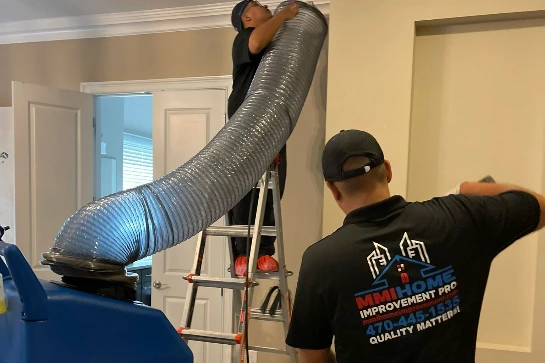Last summer, I visited my uncle’s house in the city. Everything looked fine, his home was clean, the windows were closed, and the air conditioner was running. But something was strange. My uncle kept sneezing and coughing all the time. He thought it was just allergies. But even after cleaning the house and dusting everything, his sneezing wouldn’t stop. One day, we checked an air quality app on his phone. The outdoor air was marked “unhealthy.” That’s when we realized something important: outdoor air was sneaking into his home and making the air inside worse.
That day, I learned a big lesson. Even if your home looks clean, outdoor air can still affect the air you breathe indoors. Here, I’ll explain how this happens, why it matters, and what you can do to keep your home’s air clean and safe.


What Is Outdoor Air?
Outdoor air is the air we breathe outside our homes. It may seem fresh, especially after it rains or during a cool breeze. But the truth is, outdoor air can carry lots of harmful things like:
- Smoke
- Dust
- Pollen
- Car fumes
- Chemicals from factories
- Tiny harmful particles called PM2.5
These things float in the air and can get into our homes without us even knowing.
How Outdoor Air Gets Inside Your Home
You might think your house is a strong shield, but air can find many ways to sneak in. Here are the most common ways outdoor air enters:
1. Through Cracks and Gaps
Small cracks in windows, doors, and walls can let outdoor air seep in slowly. It’s like a quiet visitor that nobody invites.
2. Open Windows and Doors
We often open windows for “fresh air,” but we may also let in pollutants at the same time.
3. Through Air Conditioners and Vents
Many homes have heating and cooling systems that bring in outside air. If those systems don’t have good filters, dirty air from outside can spread indoors.
Read Also: Symptoms of breathing poor air quality
What Outdoor Air Brings Into Your Home
Let’s take a closer look at what’s in outdoor air and how it affects your home’s air quality.
1. Particulate Matter (PM2.5)
These are very tiny dust-like particles that you can’t see. But they can go deep into your lungs when you breathe. PM2.5 can come from car exhaust, wildfires, or even burning wood.
2. Ozone
Ozone is good in the sky (it protects us from the sun), but not inside our homes. Ground-level ozone can enter our homes on hot days and irritate our lungs and eyes.
3. Pollen
Pollen from trees, grasses, and flowers can float into your home and cause sneezing, itchy eyes, and other allergy problems.
4. Nitrogen Dioxide (NO₂)
This gas comes from cars, trucks, and gas stoves. When outdoor air brings it inside, it can make asthma worse and harm your lungs.
How It Affects Your Health
When outdoor air sneaks into your home, it can make the indoor air more polluted. This can lead to health problems like:
- Coughing and sneezing
- Headaches
- Trouble breathing
- Asthma attacks
- Tiredness
- Burning eyes or throat
People with asthma, babies, and older adults are at higher risk. Even pets can be affected by dirty indoor air. However, if you want the best Indoor Air Quality Testing in Smyrna contact MMI.
When Outdoor Air Is Worse
The quality of outdoor air changes every day. Here are times when it can be worse:
1. During Wildfires
Smoke from wildfires spreads fast and carries harmful particles into homes, even far away from the fire.
2. In the Winter
People keep their windows closed, and heating systems can push dirty air around indoors. Plus, outdoor air is trapped near the ground more often in winter.
3. On Hot Summer Days
Ozone levels go up during hot, sunny days. That’s when outdoor air can carry more ozone inside.
How to Keep Your Home’s Air Clean
Even though outdoor air affects your home’s air quality, there are many things you can do to make your indoor air cleaner and safer.
1. Seal Cracks and Gaps
Use weather strips, door sweeps, and caulk to seal small gaps around windows and doors. This keeps dirty air out and also saves energy!
2. Use Air Purifiers
A good air purifier with a HEPA filter can trap dust, pollen, and PM2.5 particles. Some purifiers even remove bad smells and chemicals.
3. Change Your Air Filters
If you have an air conditioner or heating system, make sure to change the filter regularly. Use a high-efficiency filter (like MERV 13 or higher) for better results.
4. Use Exhaust Fans
Use kitchen and bathroom fans to push indoor pollutants outside. But avoid bringing in outdoor air during pollution alerts.
5. Check the Air Quality Index (AQI)
Before opening windows or going outside, check the AQI using a free app. If it’s labeled “unhealthy,” keep your home closed and turn on your air purifier.
Build a Clean-Air Zone in Your Home
You can create a special, clean space in your home. Here’s how:
- Pick one room with doors and windows that close tightly.
- Use a good air purifier in that room.
- Seal any cracks or vents.
- Avoid lighting candles or smoking in that room.
This room can be your safe zone during wildfires or high-pollution days.
Don’t Forget the Power of Plants!
Some houseplants can help clean the air. Plants like spider plants, peace lilies, and snake plants are easy to grow and may remove small amounts of indoor pollution. Just don’t count on them to do all the work, use them along with other tools.
Remember my uncle? After learning how outdoor air was affecting his home, he sealed his windows, got a HEPA air purifier, and checked the air quality every day. He also booked an Indoor Air Quality Testing Service to make sure nothing dangerous was floating around. If the air outside your home isn’t clean, it can easily become a problem inside, too. But with a few simple steps, you can protect yourself and your family. Keep an eye on outdoor air, seal up leaks, and clean the air inside your home. That way, no matter what’s outside, your indoor air will always feel safe and fresh.

